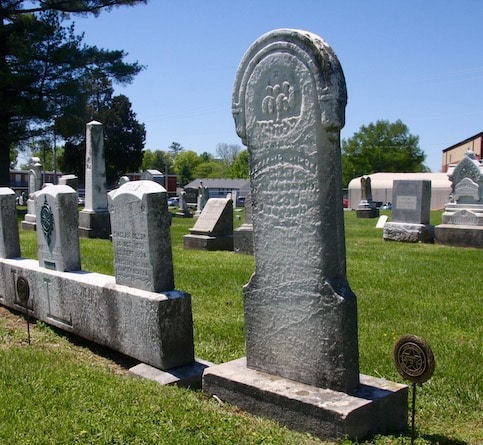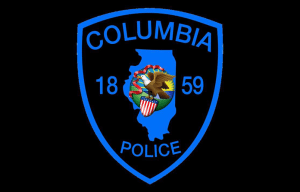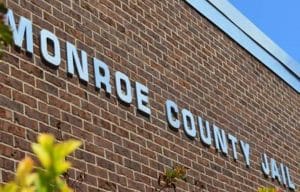The Civil War soldiers of Monroe County

Last month marked the 160th anniversary of the start of the bloodiest war in American history.
On April 12, 1861, Confederate troops opened fire on Fort Sumter at the entrance to the harbour of Charleston, S.C, marking the beginning of the Civil War.
By the time the war ended just over four years later on April 26, 1865, roughly 2 percent of the American population had perished because an estimated 752,0000 to 851,000 soldiers died during the war.
Among those who fought, and died, were 517 individuals from Monroe County, according to local historian Curt Wittbracht.
“Monroe County was populated primarily by Germans due to its proximity to the Mississippi River and available cheap farming ground,” Wittbracht said. “Germans largely opposed slavery because they had come to America as the land of freedom and had witnessed the neo-slavery of serfdom and did not want it carried into their new homeland. To Germans, owning another human being was morally wrong. When President (Abraham) Lincoln called for volunteers to suppress the rebellion of the southern states, the Germans of Monroe County wanted to prove their support for their adopted country.”
Per Wittbracht’s research, 360 Waterloo men enlisted, as did 87 from Columbia, three from Burksville and 67 from the county at large.
Among those who enlisted was Julius Just, a Waterloo farmer. At age 20, he signed up with the 49th Illinois Infantry Regiment as a private in Company H on Sept. 16, 1861.
The gray-eyed, 5-foot-11 recruit enlisted for three years, and his unit was first mustered into service at Camp Butler in October 1861.
In 1864, Just and most of his company re-enlisted.
During his service, Just and his regiment fought at Fort Donelson in Kentucky, where 14 people were killed and 37 wounded, and at Shiloh, Tenn., where 17 members of the regiment were killed and 99 were wounded.
Just then served in the Red River Campaign and finally took part in the Battle for Nashville.
Just was finally discharged on Sept. 9, 1865 at Paducah, Ky. as a corporal.
One representative of Columbia was William Cogan, who enlisted in the same regiment and company as his Waterloo neighbor as an infantryman.
Cogan was a senior among his fellow soldiers, as he signed up to fight at age 29.
A native of Ireland with brown hair and hazel eyes, he was married and worked as a miller before the war.
Cogan earned the rank of Sergeant Major before he re-enlisted on March 6, 1863 in Memphis, Tenn.
His service ended the same day as Just’s, and it appears he fought in the same battles, Wittbracht said.
Both these men survived the war, but Robert Barker of Monroe County was not as lucky. He served as a musician in Company B of the 48th Illinois Infantry Regiment, enlisting at age 18.
A single farmer, Barker stood just 5-foot-6 and had “fair hair” and blue eyes, Wittbracht said.
Barker was mustered in at Camp Butler on Dec. 31, 1861. He would die within a year.
Although he did not serve on the front lines as a musician, Barker helped as a stretcher bearer during any fighting. He was killed in action on Nov. 24, 1862 at Henderson, Tenn.
Barker’s grave may be one of the 298 that Wittbracht said belong to Civil War soldiers in Monroe County. That figure comes from research conducted by Janet Flynn.
The total number of Civil War veterans’ graves in this county is unknown.
The Illinois Secretary of State lists 124 of these from the 1929 Illinois Roll of Honor. Those individuals are buried at Waterloo City Cemetery, Ss. Peter & Paul Catholic Cemetery in Waterloo, St. Paul’s Evangelical Cemetery in Columbia, St. Augustine Cemetery in Hecker, Warderman Cemetery in Columbia, Palmier Cemetery, St. Paul Lutheran Cemetery in Columbia, New Hanover Cemetery, St. John’s Cemetery in Fults, Immaculate Conception Cemetery in Columbia, Hecker City Cemetery, Wilson Cemetery and Stehfest Freedom Cemetery.
Other cemeteries that have Monroe County Civil War veterans buried in them include Miles Cemetery in the bluffs between Columbia and Valmeyer and those in Burksville, Maeystown, Renault, Wartburg and Jefferson Barracks National Cemetery in St. Louis.
For his Eagle Scout project, Waterloo’s Shane Douglas recently honored Civil War veterans by placing a bronze marker at the gravesite of the city’s 99 known veterans who are buried here.
Memorial Day, observed on the last Monday of May, was originally known as Decoration Day and originated in the years following the Civil War. It became an official federal holiday in 1971.
By the late 1860s, Americans in various towns and cities had begun holding springtime tributes to the countless fallen Civil War soldiers, decorating their graves with flowers and reciting prayers.
In 1966, the federal government declared Waterloo, N.Y., the official birthplace of Memorial Day.
Waterloo – which first celebrated the day on May 5, 1866 – was chosen because it hosted an annual community-wide event during which businesses closed and residents decorated the graves of Civil War soldiers with flowers and flags.






